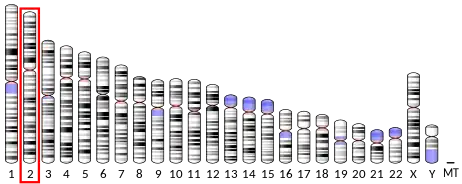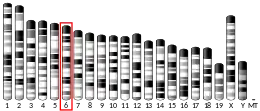| GCFC2 | |||||||||||||||||||||||||||||||||||||||||||||||||||
|---|---|---|---|---|---|---|---|---|---|---|---|---|---|---|---|---|---|---|---|---|---|---|---|---|---|---|---|---|---|---|---|---|---|---|---|---|---|---|---|---|---|---|---|---|---|---|---|---|---|---|---|
| Identifiers | |||||||||||||||||||||||||||||||||||||||||||||||||||
| Aliases | GCFC2, C2orf3, DNABF, GCF, TCF9, GC-rich sequence DNA-binding factor 2 | ||||||||||||||||||||||||||||||||||||||||||||||||||
| External IDs | OMIM: 189901 MGI: 2141656 HomoloGene: 2411 GeneCards: GCFC2 | ||||||||||||||||||||||||||||||||||||||||||||||||||
| |||||||||||||||||||||||||||||||||||||||||||||||||||
| |||||||||||||||||||||||||||||||||||||||||||||||||||
| |||||||||||||||||||||||||||||||||||||||||||||||||||
| |||||||||||||||||||||||||||||||||||||||||||||||||||
| |||||||||||||||||||||||||||||||||||||||||||||||||||
| Wikidata | |||||||||||||||||||||||||||||||||||||||||||||||||||
| |||||||||||||||||||||||||||||||||||||||||||||||||||
GC-rich sequence DNA-binding factor is a protein that in humans is encoded by the GCFC2 gene.[5][6][7][8]
The first mRNA transcript isolated for this gene was part of an artificial chimera derived from two distinct gene transcripts and a primer used in the cloning process (see Genbank accession M29204). A positively charged amino terminus present only in the chimera was determined to bind GC-rich DNA, thus mistakenly thought to identify a transcription factor gene.[8]
References
- 1 2 3 GRCh38: Ensembl release 89: ENSG00000005436 - Ensembl, May 2017
- 1 2 3 GRCm38: Ensembl release 89: ENSMUSG00000035125 - Ensembl, May 2017
- ↑ "Human PubMed Reference:". National Center for Biotechnology Information, U.S. National Library of Medicine.
- ↑ "Mouse PubMed Reference:". National Center for Biotechnology Information, U.S. National Library of Medicine.
- ↑ Johnson AC, Kageyama R, Popescu NC, Pastan I (Feb 1992). "Expression and chromosomal localization of the gene for the human transcriptional repressor GCF". J Biol Chem. 267 (3): 1689–94. doi:10.1016/S0021-9258(18)46000-0. PMID 1370479.
- ↑ Kageyama R, Pastan I (Jan 1990). "Molecular cloning and characterization of a human DNA binding factor that represses transcription". Cell. 59 (5): 815–25. doi:10.1016/0092-8674(89)90605-3. PMID 2556218. S2CID 21177070.
- ↑ Anthoni H, Zucchelli M, Matsson H, Muller-Myhsok B, Fransson I, Schumacher J, Massinen S, Onkamo P, Warnke A, Griesemann H, Hoffmann P, Nopola-Hemmi J, Lyytinen H, Schulte-Korne G, Kere J, Nothen MM, Peyrard-Janvid M (Apr 2007). "A locus on 2p12 containing the co-regulated MRPL19 and C2ORF3 genes is associated to dyslexia". Hum Mol Genet. 16 (6): 667–77. doi:10.1093/hmg/ddm009. PMID 17309879.
- 1 2 "Entrez Gene: C2orf3 chromosome 2 open reading frame 3".
External links
- Human GCFC2 genome location and GCFC2 gene details page in the UCSC Genome Browser.
Further reading
- Mao P (1999). "[Revisions of the cDNA and primary protein structure of human transcription factor GCF]". Hokkaido Igaku Zasshi. 74 (4): 315–30. PMID 10480038.
- Takimoto M, Mao P, Wei G, et al. (1999). "Molecular analysis of the GCF gene identifies revisions to the cDNA and amino acid sequences(1)". Biochim. Biophys. Acta. 1447 (1): 125–31. doi:10.1016/S0167-4781(99)00127-X. PMID 10500253.
- Strausberg RL, Feingold EA, Grouse LH, et al. (2003). "Generation and initial analysis of more than 15,000 full-length human and mouse cDNA sequences". Proc. Natl. Acad. Sci. U.S.A. 99 (26): 16899–903. Bibcode:2002PNAS...9916899M. doi:10.1073/pnas.242603899. PMC 139241. PMID 12477932.
- Ota T, Suzuki Y, Nishikawa T, et al. (2004). "Complete sequencing and characterization of 21,243 full-length human cDNAs". Nat. Genet. 36 (1): 40–5. doi:10.1038/ng1285. PMID 14702039.
- Beausoleil SA, Jedrychowski M, Schwartz D, et al. (2004). "Large-scale characterization of HeLa cell nuclear phosphoproteins". Proc. Natl. Acad. Sci. U.S.A. 101 (33): 12130–5. Bibcode:2004PNAS..10112130B. doi:10.1073/pnas.0404720101. PMC 514446. PMID 15302935.
- Gerhard DS, Wagner L, Feingold EA, et al. (2004). "The status, quality, and expansion of the NIH full-length cDNA project: the Mammalian Gene Collection (MGC)". Genome Res. 14 (10B): 2121–7. doi:10.1101/gr.2596504. PMC 528928. PMID 15489334.
- Hillier LW, Graves TA, Fulton RS, et al. (2005). "Generation and annotation of the DNA sequences of human chromosomes 2 and 4". Nature. 434 (7034): 724–31. Bibcode:2005Natur.434..724H. doi:10.1038/nature03466. PMID 15815621.
- Olsen JV, Blagoev B, Gnad F, et al. (2006). "Global, in vivo, and site-specific phosphorylation dynamics in signaling networks". Cell. 127 (3): 635–48. doi:10.1016/j.cell.2006.09.026. PMID 17081983. S2CID 7827573.
This article is issued from Wikipedia. The text is licensed under Creative Commons - Attribution - Sharealike. Additional terms may apply for the media files.




